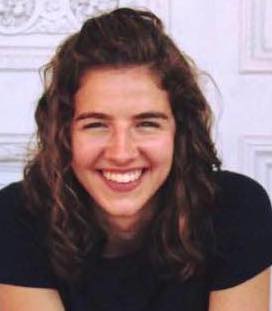Tatom-Naecker, Theresa
|
Theresa-Anne Tatom-Naecker is a second-year PhD student in the Department of Ecology and Evolutionary Biology at the University of California, Santa Cruz. Her research focuses on the feeding and foraging behavior of common bottlenose dolphins (Tursiops truncatus) in Sarasota Bay, Florida, where she works in collaboration with the Sarasota Dolphin Research Program. She is passionate about teaching and communicating science to a broad range of audiences and mentoring the next generation of diverse scientists. In her future career as a marine mammal scientist in a government agency, she will use the pedagogical knowledge and skills that she gained from the PDP to combine innovative research and equitable and inclusive education.
|
 |
Teaching Activity Summary
Name of Teaching Activity: Exploring the scientific process, microbiology, and antibiotics -- understanding the central dogma
Teaching Venue: MARC Summer Research Institute Workshop, UCSC. June 18 and 19, 2019
Learners: 10 undergraduate students.
Reflection on how the activity designed was influenced by research on equity & inclusion in STEM teaching:
Our PDP team chose to concentrate on the Equity and Inclusion focus area of “developing an identity as a person in STEM.” Our activity centered around helping learners gain a sense of their competency in STEM practices, recognizing their competency, and showing them how their existing abilities and interests fit into STEM and are applicable and represented in the STEM field.
We chose this focus area following our reading of literature on the subject (e.g., Carlone and Johnson, 2007; Hazari et al., 2010) that highlighted how developing an identity as a “science person” required feeling competence in scientific practices, performing that competence, and receiving recognition of that competence by meaningful others (whether professors, peers, other scientists, or family or community members). We designed our activity with this in mind. First, our main inquiry activity focused on having the students act as scientists going through the scientific process. Students made and tested hypotheses, found different ways of getting to the answer, took part in expertise groups where they were responsible for knowledge that other members of their group didn’t have and thus were the go-to expert in their groups, interpreted their data and made conclusions, and presented their findings in their own way in posters. This allowed students to feel and perform competence and receive recognition for that competence from both their peers and their instructors (us, the facilitators). Furthermore, during our introduction, we asked students about themselves and their interests, both scientific and otherwise, and in our final Synthesis we highlighted how those interests were represented in current science. The Synthesis highlighted how students could pursue their own interests, and their own identities, in their scientific careers.
I also embraced the focus area of developing STEM identity when facilitating with the students. I made sure to repeat back to the learners what they were expressing, in order to make their thinking accessible to me and their peers and acknowledge their ideas and unique contributions and their applicability and correctness. I also redirected learners to ask their peers when they turned a question to me, in order to encourage engagement, dialogue among the group members, and ownership of their ideas and contributions. Both of these actions guided students to demonstrate their competence and then receive recognition of it.
In our assessment survey after the inquiry activity, students described feeling more confident using scientific practices and inspired to pursue research opportunities, demonstrating the workshop’s value. Motivated by the success of this inquiry activity, in my future teaching I will continue focusing on guiding students to demonstrate competence and recognizing that competence in order to support students in developing their STEM identities.
